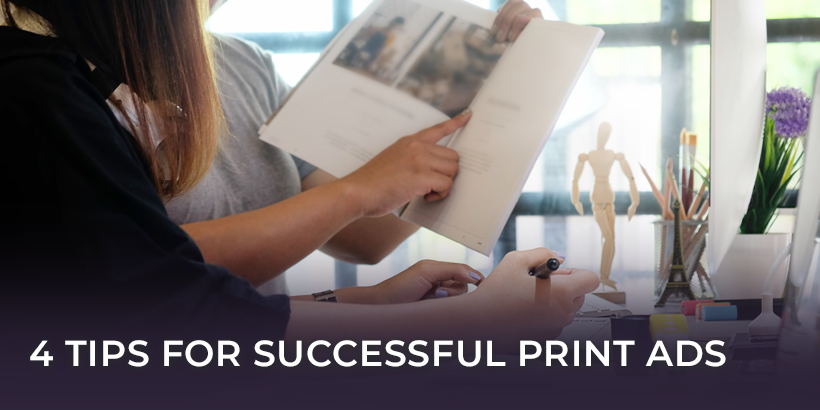
Designing print ads can be tricky. They’re often far larger than their digital counterparts, which means you have more space to work with—but it can easily feel like too much space.
There’s also more at stake: once they go live, there’s no turning back. You can’t just pull a print ad if you notice a mistake after it’s been published. It’s out there for the whole world to see.
So it’s important that you take the time to design your print ads right. Here are four tips to help you create successful print ads.
1. Make it easy to read
If people can’t read and understand your message, all that time and money you put into your ad is wasted. To be successful, your ad needs a font that’s big and clear, your text needs strong contrast, and your word choice should be simple and accessible. Be wary of using jargon.
People might be willing to squint and struggle with small text or poor contrast to read an article they’re really interested in. But if your ad has small text or your text is barely visible against the background, it makes your message that much easier to ignore. You want your message to stand out, not blend in.
To make your ad even more readable, use a clear headline to organize your big idea and give people key messaging to latch onto.
You should also take advantage of negative space to help your audience focus on your key text and imagery. Just because you have empty space doesn’t mean you need to fill it. Strategically using negative space can help your message pop out of the page.
2. Use your space wisely
The best ads feel like they belong. In an ideal world, as people flip through their favorite magazines, the ads would all look like the articles that surround them—and they’d be just as interesting and worthwhile to read. (This is the idea behind native advertising.)
If you have a full page, why not use your space to tell a story? You could share a longer testimonial, a thought leadership piece, or a quick how-to guide based on one of your target audience’s common goals or problems.
At the same time, you need to be careful that you aren’t trying to say so much that you have to sacrifice readability by using small, hard-to-read text. If you don’t have room to say everything you want to say, and you can’t possibly condense it or use an image or icon to communicate your point. . . maybe you need to find something else to say.
Be conscious of how much room a publisher gives you to work with, and craft your message to maximize that space.
3. Choose a clear call-to-action (CTA)
What happens after someone finishes looking at your ad? What if they really want to research or buy your product? Are they just supposed to Google you, or guess the name of your website? Did you tell them where to go and what to do? Who to call? Is there a unique URL for them to enter?
Whatever you want people to do after looking at your ad, make sure it’s prominent, and ideally, trackable. (Coupon codes, exclusive offers, and unique URLs can help with this.)
It’s hard to measure the complete value of print ads. Sales from print are often difficult to track, and the benefits of branding are a lot less tangible. But if you don’t include a call-to-action, it becomes next to impossible.
4. Know your audience
Before you ever start designing your ad, you need to know who’s going to see it. What kinds of people read the print materials where your ad will appear? What kinds of things are they used to seeing? What articles are they going to be reading? Which sections of your target audience are most likely to encounter your ad?
These insights should all inform how your ad looks and feels. Individual issues of a magazine often have broad themes—is your ad going to fit within those themes, or will it be a jarring deviation from what everyone else is talking about?
The more you know about your target audience and the people who are going to see your ad, the easier it is for you to create relevant messaging, choose a relevant offer, and ultimately produce a relevant ad.
Make the most of your print ads
Print advertising is a valuable opportunity to put your brand in front of a highly engaged audience. It’s a chance to capture the attention of the right people and create positive associations with your product or service.
While digital advertising revolves around conversion optimization, print ads are about making every impression count. And while digital ads often feel like interruptions, print ads can add to the reading experience.
So take the time to do them right.